Knee Injury
Everything you need to know about Soccer Knee injuries
- EDUCATE® -
Understanding Your Knee Injury & First Steps to Recovery
In this five-part guide, Dr. Kuhlman shares his knowledge of soccer-specific knee injuries, going over:
1) Common signs and symptoms of knee sprains, and a grading scale of sprain severity
2) Framework for what to do during the first week post-injury.
3) When to seek professional help and where to go
4) Common mechanisms of injury (MOIs) in soccer
5) Basic anatomy of the knee area
1) Do I Have a Knee Sprain?
What's the difference between a "sprain" and a "strain"?
There are two main categories that I divide potential knee injuries into, which I will further describe below.
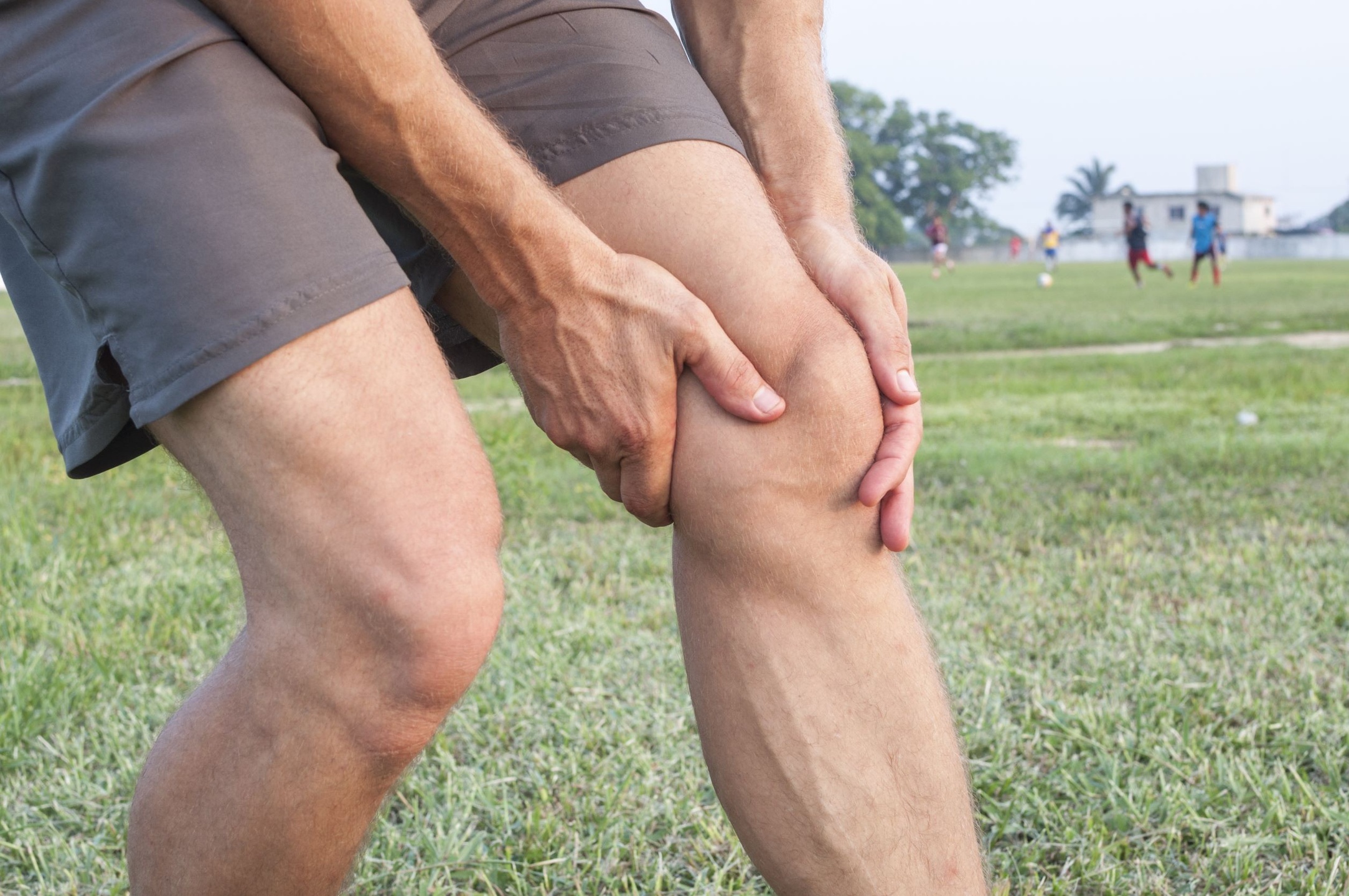
The two categories of knee injuries:
Category I: The Knee Collaterals and Cartilage
The Medial Collateral Ligament (MCL) and Lateral Collateral Ligament (LCL), which run along the inside and outside of the knee respectively, are most commonly injured by a blow to the outer/inner part of the knee. If there is a direct blow to the inside of the knee, it is going to overstretch the ligaments on the outside of the knee, aka the lateral collateral ligaments. Same logic goes with a blow to the outside of the knee. This can also happen if the knee is put in a dysfunctional position repeatedly with running/cutting that over stretches those ligaments. Excess ligamentous stress and strain over time due to poor movement patterning can weaken these ligaments and lead to this overstretch injury. The most common symptoms of these injuries are pain, bruising, and tenderness to the touch directly on the inside (MCL) or outside (LCL) of the knee.
The Meniscus is the cartilage that sits on top of the tibia (lower leg bone) and is designed to help cushion the joint upon impact. In a standing position, the meniscus makes up the floor of the joint (MCL and LCL make up the side walls). This is one of the most commonly injured tissues of the knee. There is generally more swelling with a meniscus injury, tenderness right along the inside or outside joint line, catching/locking of the knee, and inability or difficulty fully extending the knee. There is generally no bruising associated with a meniscus injury, so if you see bruising, think more ligamentous injury.
What are the symptoms of Category I injuries? How can I tell the difference?
-
If you have pain along inside of knee, mild swelling, bruising, and tenderness, you likely have a Medial Collateral Ligament Injury
-
If you have pain along outside of knee, mild swelling, bruising, and tenderness, you likely have a Lateral Collateral Ligament Injury
-
If you have joint line pain, moderate swelling, catching/clicking, and can’t fully flex/extend your knee, you likely have a Meniscus Injury
-
If you have gradual onset pain located around the kneecap that occurs when you squat/bend, you likely have PFPS
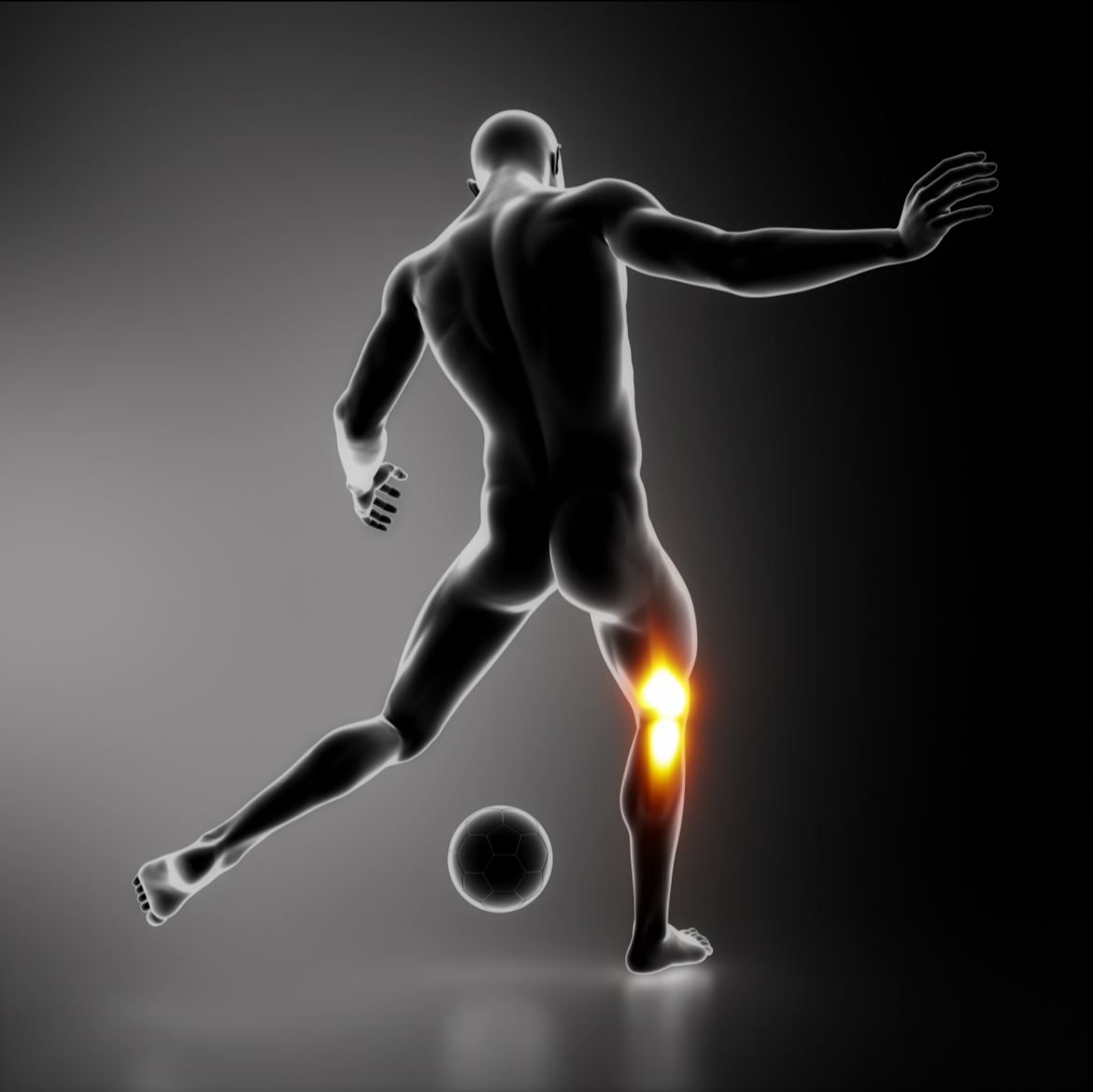
If one of these sound like your injury,
The below guide is for you!
2) Knee PROTECT Guide:
Framework for the First Week Post-Injury
The first week is arguably the most important week for tissue healing and getting rehabilitation off on the right foot. But what should you do? There is so much information on the internet, it can be like drinking from a firehose.
Luckily, Dr. Kuhlman has created an injury guide called PROTECT® - Knee Sprain, designed specifically for soccer players. This step-by-step, easy-to-follow guide has everything you need to start your rehabilitation off right, and it is divided into four pillars of injury care:
- Pillar 1: Protecting the Damaged Tissue | Rest, Compression, Bracing, Kinesiotaping, Getting Through Your Day Safely
- Pillar 2: Pain Management | To Ice or Not to Ice?, Topical Pain Relievers, NSAID Considerations
- Pillar 3: Tissue Health and Healing | Sleep, Hydration, Nutrition
- Pillar 4: Movement | Massage, Foam Rolling, IASTM, Flex/Ext ROM
- Putting It All Together: A Sample Day-to-Day Schedule
Dr. Kuhlman developed PROTECT® - Knee Sprain after countless hours of research and years of clinical, face-to-face rehabilitation - and it's completely free, you just have to enter your email below!

PROTECT Your Acute Knee Injury with Dr. Kuhlman's Free PROTECT Guide!
If you're recently hung up with a soccer injury, the PROTECT Guide is for you! Lay the groundwork for healing and rehab with Four Pillars designed to protect the damaged tissue and ready your knee injury for rehabilitation.
Get Your Free GuideIf your injury does not match any of the above descriptions, keep reading as it may be a more severe injury that needs more advanced care
Category II: The Cruciates
The Anterior Cruciate Ligament (ACL) and Posterior Cruciate Ligaments (PCL) live inside the actual knee joint and provide crucial stability to the knee joint as a whole. These two get their own category because if there is a suspected injury to these ligaments, it is best to get checked out by a medical professional (see below for where to start with that) before starting any kind of rehabilitation protocol.
The ACL is probably the most infamous knee injury in sports today. It has a long recovery time (7-12+ months), getting to pre-injury performance levels is not guaranteed, and the risk of re-injury is high.
The symptoms of an ACL injury include, but are not limited to:
- A loud popping sensation in the knee
- Buckling/giving way/instability
- Rapid and significant swelling
- Loss of range of motion
- Severe pain
- Inability to continue sport
The symptoms of a PCL injury are similar, but usually not to as severe of a degree. The pain associated with injuries to the tissues in Category I is more specific and can be pinpointed, whereas the Category II cruciate ligament pain tends to be more generalized and widespread through the whole knee.
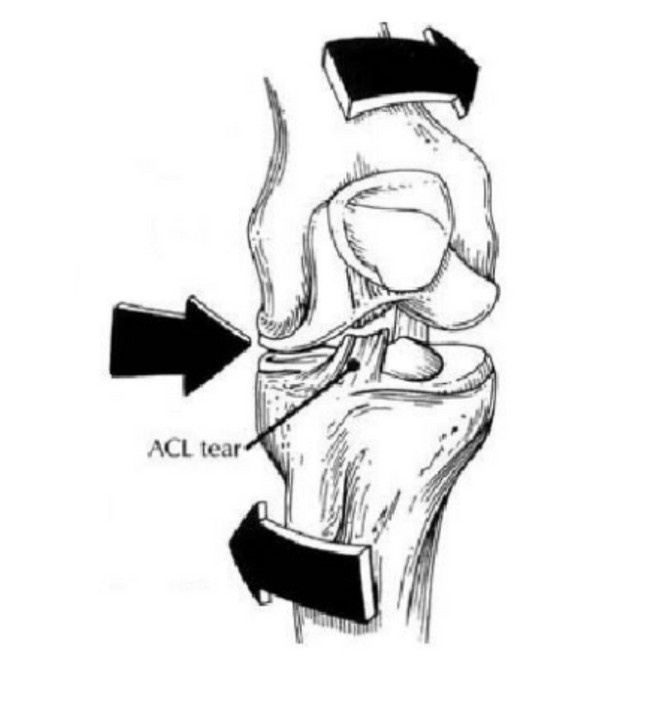
3) When to Get Professional Help (and Where to Start)
If you believe you have one of the knee injuries above, there are a few paths you can take, depending on the severity of your injury.
Keep in mind that The Soccer Assist programs are designed for mild to moderate injuries from Category I. While elements of these programs would be used in recovery of Category II (Cruciate injuries) and more severe Category I cases, it is best to have a medical professional there to monitor the course of your recovery program for these more serious injuries.
"When should I seek advice from a local medical professional?"
Contact a medical professional if you:
- Are having a hard time moving the joint at all
- Can’t walk without severe pain
- Have surrounding muscle weakness
- Feel like your joint will collapse at any time, and/or
- Have a high level of bruising throughout the whole joint
I use the saying, “if it feels sketchy, it's probably sketchy” a lot in practice. Basically, if you feel like it's bad, it's probably bad, and you should get it looked at. But where should you start?

“I think my injury is serious and I might have a severe Category I and/or a Category II injury. Where do I start?”
If you are like most Sunday League players, you don't have an Athletic Trainer present to look at your injury. If you do have access to a Team Doc, start with them! But if you are a weekend warrior or just don’t have the luxury of team staff, the gold standard to look for is an Orthopedic office that also functions as an urgent care. They are going to be most prepared to handle orthopedic injuries such as knee sprains.
Depending on what state you live in, a Sports Chiropractor would also be a great place to start. Unfortunately, a lot of states restrict which physicians may refer where. A sports physical therapist (PT) may be a good option as well, but it's common for insurance companies to not cover a visit to a PT without a referral from a Medical Doctor. If none of the previous options are available to you, a primary care physician (or your regular/family physician), urgent care facility, or even an emergency room visit may be warranted.
A medical professional at one of these facilities may recommend an MRI (magnetic resonance imaging test) to determine the severity and extent of the injury. An MRI is a noninvasive procedure that can create detailed images of almost every internal structure in the body using a large magnet and radio waves. An MRI can help dictate the proper course of action and is often necessary to diagnose severe knee injuries (like ACL tears), though they can be expensive; the average cost of an MRI can range anywhere from $400 to $12,000, depending on your place of service, health insurance, and other variables.
“Based on the criteria above, I think I have a mild to moderate Category I injury. What should I do?”
That is where The Soccer Assist comes in! We have created programs to guide you from your initial injury (where you most likely are now), to back on the pitch, playing the game we all love! The next section details our framework for what to do that first week post injury.
4) Most Common Mechanisms of Injury (MOI) for Soccer Players
There are two basic ways that the knee gets injured on the soccer pitch: contact and non-contact.
An example of a contact injury is when someone comes through your knee on a tackle and stresses the ligaments beyond their limits and into injury. These, unfortunately, are a risk that all soccer players run as part of the game.
The second, more common, and more preventable knee injury MOI is the non-contact knee injury. This is where you are landing, cutting/turning, kicking, or running and your knee just gives out and becomes injured. This is due to some combination of knee stabilizer weakness, patterning, failure, or fatigue that puts stress on the knee joint until one of the tissues of the knee eventually gives out.

"I tore my ACL in the last game of a tournament in 2014. We had played a ton of minutes in 3 days, and my legs were gone. In the second half of that last game, I took a shot and landed on my shooting foot. Upon landing, my knee simply gave out: there was no stability left in it. It immediately swelled up and was very unstable - I ended up getting surgery on it a few weeks later. While it was a traumatic physical event at the time, my recovery journey eventually became the inspiration for creating these rehab programs and The Soccer Assist!"
5) Anatomy of the Knee Joint
The knee is a complex joint that is categorized as a “hinge” joint and is designed, at its most basic level, to flex and extend. It is classified as a synovial joint, which means it is an enclosed, fluid filled structure that is designed for a high degree of movement.
There are numerous ligaments and supporting tissues that help to stabilize the knee, the most important of which include:
- Medial and Lateral Collateral Ligaments
- Anterior and Posterior Cruciate Ligaments
- Patellar Tendon
- Meniscus
There are other smaller, supporting characters in this area, but the ones listed above are the most important for the purposes of our rehab guides.
While there is only one small muscle considered part of the knee joint, the knee has some very powerful muscle neighbors. The quadriceps and hamstring muscle groups influence the front and back of the knee joint from the top, respectively. The tibialis anterior (shin muscle) and gastrocnemius group (calves) support and influence the knee joint from below. Because the knee has such long bones above and below it, a lot of pressure and torque can go through it in sport, and therefore it is one of the most injured joints in the body.
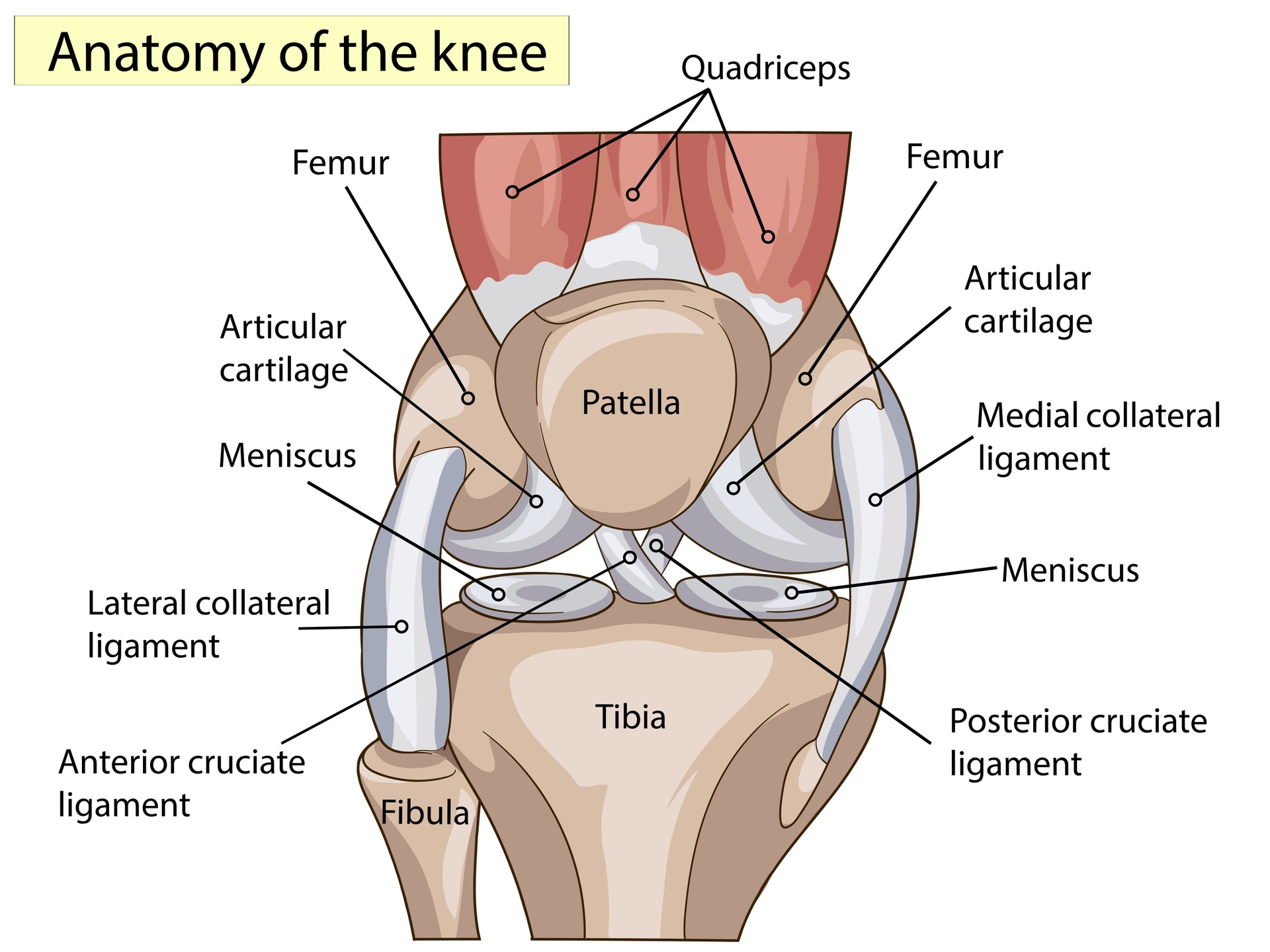

Knee PROTECT® Guide
Instructions for what to do in the first week post injury. Access this FREE guide just by entering your email.
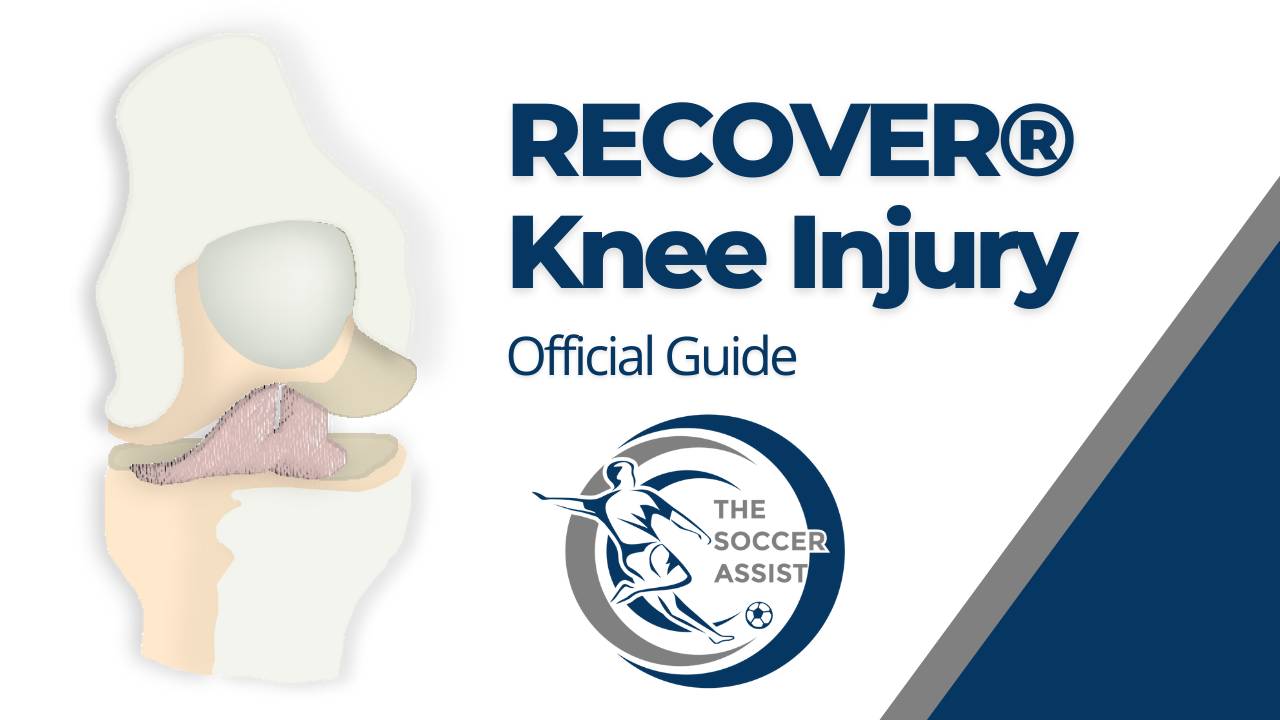
Knee RECOVER® Guide
Full three phase program with hours of expertly crafted content and over 30 knee rehab videos, taking you from the sidelines to the pitch!

FORTIFY®: Prevent it
Dr. Kuhlman's guide dedicated to preventing soccer injuries using lessons, hacks, and techniques gleaned from 15+ years of working with athletes


